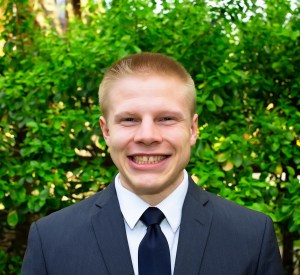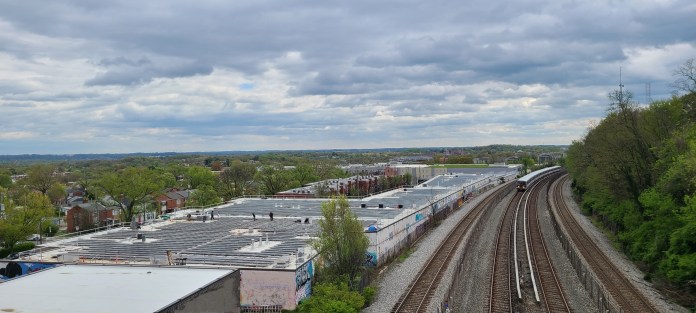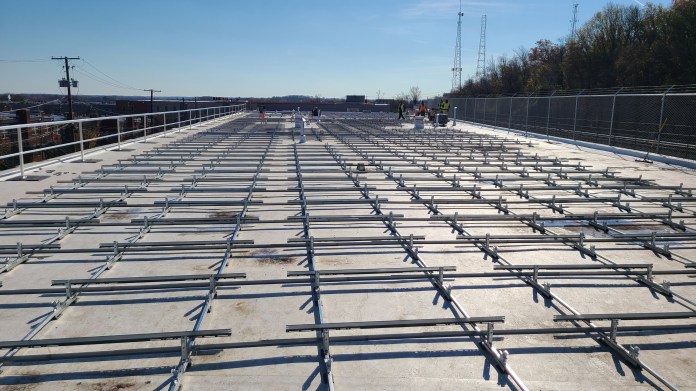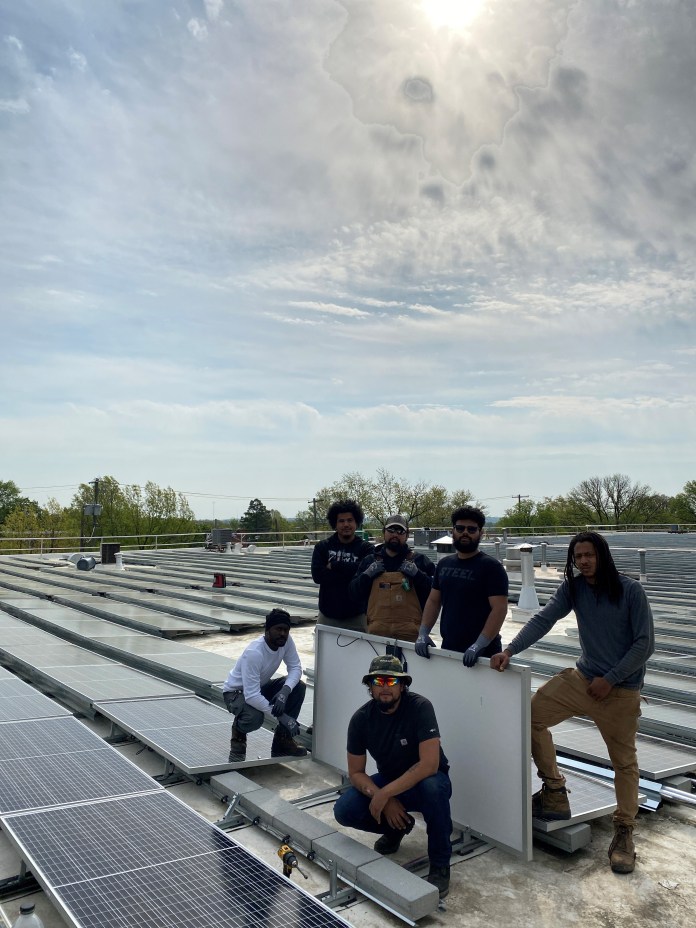From Concept to Completion: The Largest Rooftop Solar Project in DC’s Brookland
How the team met the challenge of this innovative installation in the nation’s capital.
Real Property & Energy Solutions has installed and operates one of the largest rooftop solar projects in Washington D.C.’s Brookland neighborhood. Spanning 54,000 square feet at 5760-5788 Second St. NE, the 842.4-kilowatt system consists of more than 2,100 solar panels which produce 1,164 megawatt-hours of energy per year and offsets 1.8 million pounds of carbon dioxide emissions each year.

Keaton Pavier, Senior Energy Engineer, Real Property & Energy Solutions. Image courtesy of Real Property & Energy Solutions
Commercial Property Executive talked to the company’s Senior Energy Engineer Keaton Pavier about the backstage work and the particularities of the project. He mentioned that the energy produced by the solar array is not used by the property’s tenants—which include Hellbender Brewing Co., Gentle Giant Moving, Dolci Gelati, Banville Wine Merchants and District Veterans Contracting—as net metering was not applicable here.
“All of the tenants have their own individual electrical service connections and are individually metered,” said Pavier. Also, the base voltage supply from the utility transformers to the tenants was not directly compatible with the voltage of the AC side of a solar system at this scale. It simply would not have been financially or physically feasible to complete the number of interconnections required to get the tenants net-metered while still providing a return on investment to the building ownership, Pavier explained.
However, the system is part of the Solar Community Renewable Energy Facility in Maryland, which the tenants can benefit from by subscribing to it. Anyone in the community, including the commercial tenants, can purchase credits for the electrical supply from the system.
Here’s what else Pavier revealed about the Brookland project and the industry in general.
Tell us about the installation process at 5760-5788 Second St. NE. How long did it take, how many people worked on the project, and did you have trouble finishing it on time?
Pavier: The project took about two years to complete—one year for the design and engineering phase and obtaining approvals for permits and from the utility, and one year for the installation itself.
We had approximately 15 people working at the site at any one time, but that fluctuated depending on the stage of the project. The weather was the only real issue during construction as it would hinder access and safety for the crews working on and around the roof. We also had several ice storms during the installation phase of the project. Because we had a new white roof installed, it took longer than expected to melt after each of these storms.
Were there any other challenges you had to overcome? How did you do it?
Pavier: We had to change the model of the photovoltaic panel a few weeks before construction started as the current supply had run out and the manufacturer had moved on to a new model of panels. Luckily, we were able to find another Tier 1 manufacturer with the same dimension, wattage and efficacy as the original model. This meant we could resubmit the permit plans with only minor changes.
The other challenge came at the end: getting the final authorization to operate from the local utility company. Unfortunately, an additional requirement was added at the end of the project, which added a couple of weeks after the array portion of the project was completed before the system could be powered on. Fortunately, we were able to complete all the additional requirements and were able to templatize them for future projects to reduce cost and installation time.
READ ALSO: ULI Report Aims to Accelerate Renewable Energy in CRE
Where from are the panels you are using—U.S.-made or imported?
Pavier: Both. Many of the Tier 1 manufacturers have a presence in the U.S. and multiple countries around the world. The quality of the product is tied more to the manufacturer than the country of origin. Along with understanding the specifications and overall efficiency of the panel—and not the max watt output—using a Tier 1 manufacturer with a strong history and quality assurance program is the most important aspect of selecting a photovoltaic panel.
Why do you think there are not more industrial facilities, big-box stores and shopping malls installing solar panels on their rooftops?
Pavier: Many factors, with access to capital for building owners being the largest. ROIs can often run upward of 10 years or more in certain situations. Facilities with multiple triple net lease tenants often make roof access more complicated than in a single-tenant site.
Another obstacle is the physical infrastructure of the roof and the electrical service layout. Roof leasing has become a very powerful tool for solar in this space, which is opening many doors to sites that were previously uninterested in pursuing solar.
How is the solar industry coping with the rising cost of construction materials, as well as the supply issues induced by the pandemic?
Pavier: As is the case with many industries, there are supply chain issues involving both price and availability. Previous capital investment in the panel manufacturing industry in the U.S.—and around the world—has luckily minimized the impact of many of these issues on the supply of photovoltaic panels.
However, other items—such as inverters and optimizers that rely on microchips—have been affected by supply shortages. Electrical wire, conduit and other traditional electrical components have been impacted by recent price increases that are hitting the construction industry in general.
Over the past decade, price declines made renewables the cheapest sources of electricity in many parts of the world. Are the rising global inflation and the higher interest rates the end of affordable clean power?
Pavier: I don’t believe so. Installation costs are just one of the factors that make solar a viable and economical source of electricity. Once installed, the low operating cost still makes it a great investment at all scales.
LISTEN TO: Is This Solar’s Time to Shine in CRE?
Which of the two factors—rising inflation and rising interest rates—is most disturbing for the expansion of the renewable energy industry and why?
Pavier: Interest rates. Inflation, while playing a factor, can often be hedged against with proper planning and efficient ongoing operations. Increased interest rates greatly affect the available capital to make these long-term investments in the energy market.
How will these two factors impact the sustainability focus in general?
Pavier: While there may be an initial slowdown from the “shock factor,” we believe it will still move forward as the “from concept to completion” is unmatched by any other source. However, projects will need to continue to be executed in a smart and thoughtful manner, to avoid bubbles and ineffective projects.
What solutions are there to maintain the industry on an upward trend?
Pavier: Continuation of the Federal Solar Investment Tax Credit is key to continue driving adoption, also energy storage, microgrid innovations/advancements and continued simplification of regulatory processes.












You must be logged in to post a comment.